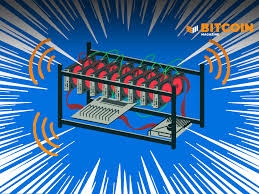Bitcoin Mining

Bitcoin mining is a crucial process that underpins the entire Bitcoin network. It involves a competitive effort among miners to generate cryptographic solutions to validate transactions and secure the blockchain. In this guide, we will delve into what Bitcoin mining is, how it works, its economic implications, and the challenges it faces.
At its core, Bitcoin mining is a process by which transactions are verified and added to the public ledger, known as the blockchain. This decentralized network relies on miners to maintain the integrity of the system. When a miner successfully solves a complex mathematical problem, they receive a reward in the form of newly minted bitcoins and transaction fees from the transactions included in the block they mined. This reward system continues until a maximum supply of 21 million bitcoins is reached, at which point miners will be compensated solely through transaction fees.

Mining serves several vital purposes: validating transaction information, maintaining the integrity of the blockchain, and creating new blocks. The Bitcoin reward acts as an incentive for miners to participate in the network. Over the years, mining has evolved significantly, with miners utilizing advanced machinery and forming mining pools to increase their chances of success. However, Bitcoin mining has also generated controversy due to its substantial energy consumption and environmental impact.
To understand the mechanics of Bitcoin mining, consider a simplified analogy. Imagine you challenge friends to guess a number between 1 and 100. They don’t need to guess the exact number but must be the first to guess a number less than or equal to it. If the number is 19, and a friend guesses 21, they lose. But if someone guesses 16, they win. In this scenario, the number 19 represents the target hash that the Bitcoin network creates for a block, while the guesses represent miners’ attempts to find the correct hash.
The hashing process is central to mining. Each block’s data is transformed into a unique 64-digit hexadecimal number called a hash using the SHA-256 hashing algorithm. Generating a hash is quick, but reversing it to obtain the original data is computationally challenging. Miners append a nonce (a number used only once) to the block data to generate different hashes. They start with a nonce of zero and increment it with each attempt. The goal is to find a hash that is less than or equal to the target hash set by the network. The first miner to find a valid hash adds the block to the blockchain and earns the associated rewards.
At the heart of Bitcoin mining lies the hash. The hash represents the computational effort involved in mining, which is often referred to as proof-of-work (PoW). This proof indicates that the miner has done the necessary work to validate transactions. Once a block is mined, it is confirmed by the network through multiple validations, with each block containing the hash of the previous block. This interconnectedness ensures the integrity of the blockchain; altering any single block would change all subsequent hashes.
The rewards for mining Bitcoin have changed over time. Initially, miners received 50 bitcoins per block in 2009. This reward halves approximately every four years, or after 210,000 blocks are mined. As of April 2024, the block reward stands at 3.125 bitcoins. The halving process is significant because it introduces scarcity, affecting Bitcoin’s supply dynamics and market value.
Mining difficulty is another crucial aspect of the process. This metric indicates how challenging it is to find a valid hash. The network adjusts mining difficulty approximately every two weeks based on the total computational power (hash rate) of the network. The more miners that participate, the higher the difficulty becomes, which helps maintain a consistent block generation time of about 10 minutes.
Bitcoin mining is not just a technical endeavor; it is also a business. The profitability of mining largely depends on the costs associated with it. There are three primary costs involved:
Electricity- Mining operations consume a significant amount of energy. The Bitcoin network’s total energy consumption is comparable to that of entire countries. Miners must factor in electricity costs, which can vary widely depending on location and energy sources.

Mining Equipment- To remain competitive, miners often invest in specialized hardware known as ASICs (Application-Specific Integrated Circuits). While general-purpose computers can mine, their profitability is limited. ASICs can cost between $4,000 and $12,000 per unit, and the faster and more efficient the equipment, the higher the price.
Cooling and Infrastructure- Mining rigs generate a substantial amount of heat, necessitating cooling systems to maintain optimal operating conditions. Additionally, the network infrastructure must support low latency for effective communication with the Bitcoin network.
The total costs of these inputs must be less than the value of the bitcoins mined to ensure profitability. Given the volatile nature of Bitcoin’s price, miners must continuously evaluate their operations to remain financially viable.
Due to the competitive nature of Bitcoin mining, many miners join forces in what are known as mining pools. In a pool, miners combine their computational power to increase their chances of successfully mining a block. The rewards are then distributed among the members based on their contributions. Popular mining pools include FoundryUSA and AntPool, which have garnered substantial user bases and computing power.
Bitcoin mining has sparked significant debate due to its environmental impact. The energy consumption associated with mining operations has raised concerns about sustainability and carbon footprints. As more miners enter the space and the difficulty increases, the energy required to mine Bitcoin continues to grow, leading to calls for more eco-friendly mining practices and innovations.
As the Bitcoin ecosystem evolves, so too will mining. With advancements in technology and growing awareness of environmental issues, the future may see the adoption of more sustainable practices. Innovations such as renewable energy sources and more efficient mining hardware could play a crucial role in shaping the next generation of Bitcoin mining.
Bitcoin mining is a complex but essential component of the cryptocurrency ecosystem. It involves verifying transactions, maintaining the blockchain, and generating new bitcoins through a competitive process. As the network grows and evolves, miners must adapt to changing technologies, market conditions, and environmental concerns. Whether you’re a potential miner or simply curious about how Bitcoin works, understanding the intricacies of mining is key to grasping the broader cryptocurrency landscape.